Sharath Koorathota
EEG-estimated functional connectivity, and not behavior, differentiates Parkinson's patients from health controls during the Simon conflict task
Oct 09, 2024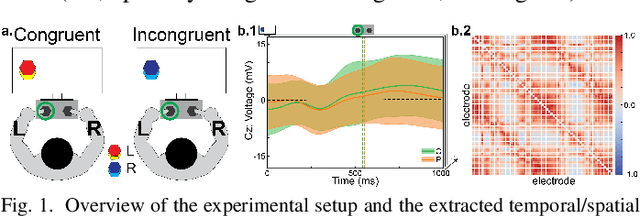
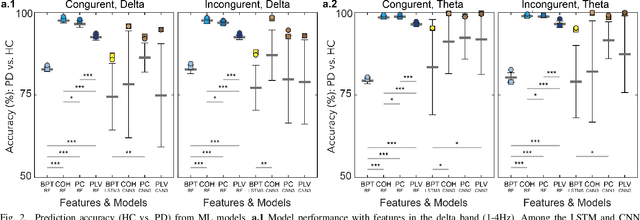
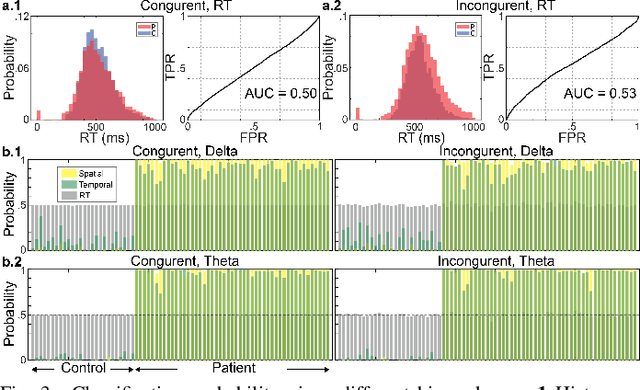

Abstract:Neural biomarkers that can classify or predict disease are of broad interest to the neurological and psychiatric communities. Such biomarkers can be informative of disease state or treatment efficacy, even before there are changes in symptoms and/or behavior. This work investigates EEG-estimated functional connectivity (FC) as a Parkinson's Disease (PD) biomarker. Specifically, we investigate FC mediated via neural oscillations and consider such activity during the Simons conflict task. This task yields sensory-motor conflict, and one might expect differences in behavior between PD patients and healthy controls (HCs). In addition to considering spatially focused approaches, such as FC, as a biomarker, we also consider temporal biomarkers, which are more sensitive to ongoing changes in neural activity. We find that FC, estimated from delta (1-4Hz) and theta (4-7Hz) oscillations, yields spatial FC patterns significantly better at distinguishing PD from HC than temporal features or behavior. This study reinforces that FC in spectral bands is informative of differences in brain-wide processes and can serve as a biomarker distinguishing normal brain function from that seen in disease.
Fixating on Attention: Integrating Human Eye Tracking into Vision Transformers
Aug 26, 2023



Abstract:Modern transformer-based models designed for computer vision have outperformed humans across a spectrum of visual tasks. However, critical tasks, such as medical image interpretation or autonomous driving, still require reliance on human judgments. This work demonstrates how human visual input, specifically fixations collected from an eye-tracking device, can be integrated into transformer models to improve accuracy across multiple driving situations and datasets. First, we establish the significance of fixation regions in left-right driving decisions, as observed in both human subjects and a Vision Transformer (ViT). By comparing the similarity between human fixation maps and ViT attention weights, we reveal the dynamics of overlap across individual heads and layers. This overlap is exploited for model pruning without compromising accuracy. Thereafter, we incorporate information from the driving scene with fixation data, employing a "joint space-fixation" (JSF) attention setup. Lastly, we propose a "fixation-attention intersection" (FAX) loss to train the ViT model to attend to the same regions that humans fixated on. We find that the ViT performance is improved in accuracy and number of training epochs when using JSF and FAX. These results hold significant implications for human-guided artificial intelligence.
Improving Prediction of Cognitive Performance using Deep Neural Networks in Sparse Data
Dec 28, 2021
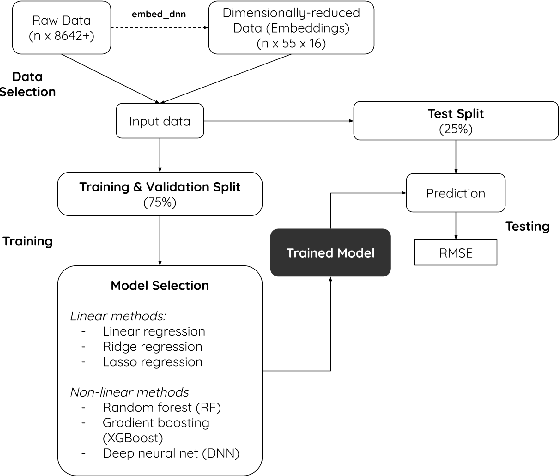
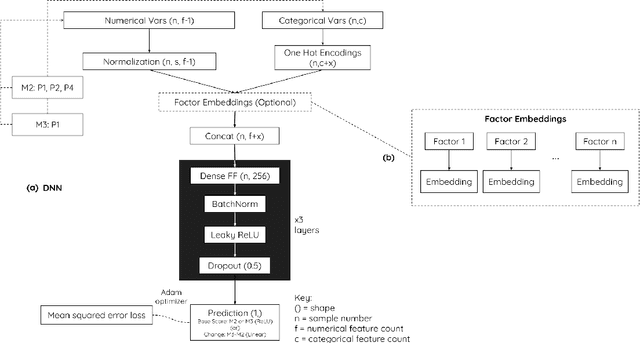
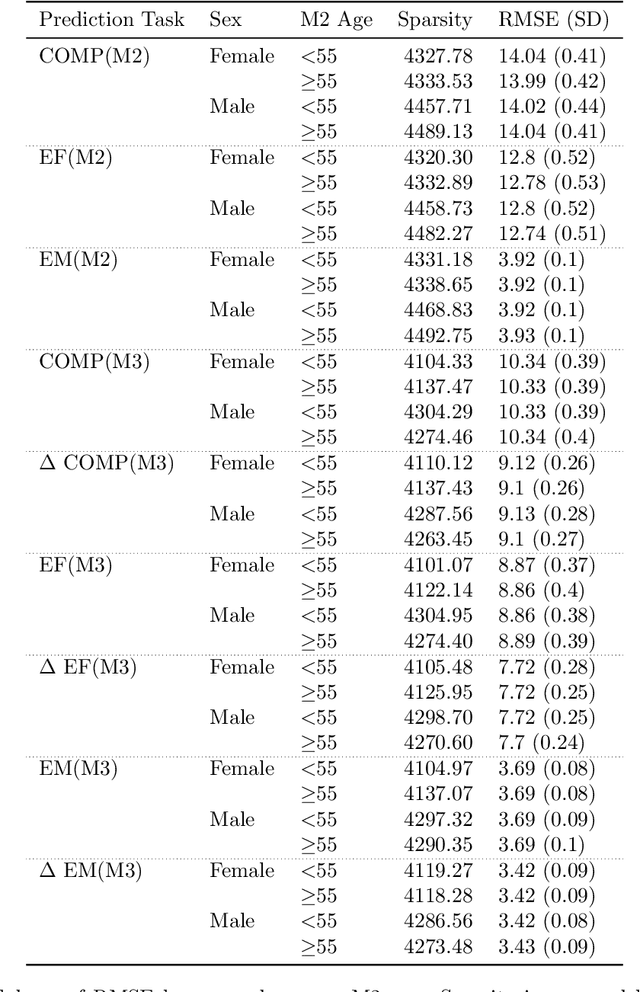
Abstract:Cognition in midlife is an important predictor of age-related mental decline and statistical models that predict cognitive performance can be useful for predicting decline. However, existing models struggle to capture complex relationships between physical, sociodemographic, psychological and mental health factors that effect cognition. Using data from an observational, cohort study, Midlife in the United States (MIDUS), we modeled a large number of variables to predict executive function and episodic memory measures. We used cross-sectional and longitudinal outcomes with varying sparsity, or amount of missing data. Deep neural network (DNN) models consistently ranked highest in all of the cognitive performance prediction tasks, as assessed with root mean squared error (RMSE) on out-of-sample data. RMSE differences between DNN and other model types were statistically significant (T(8) = -3.70; p < 0.05). The interaction effect between model type and sparsity was significant (F(9)=59.20; p < 0.01), indicating the success of DNNs can partly be attributed to their robustness and ability to model hierarchical relationships between health-related factors. Our findings underscore the potential of neural networks to model clinical datasets and allow better understanding of factors that lead to cognitive decline.
 Add to Chrome
Add to Chrome Add to Firefox
Add to Firefox Add to Edge
Add to Edge